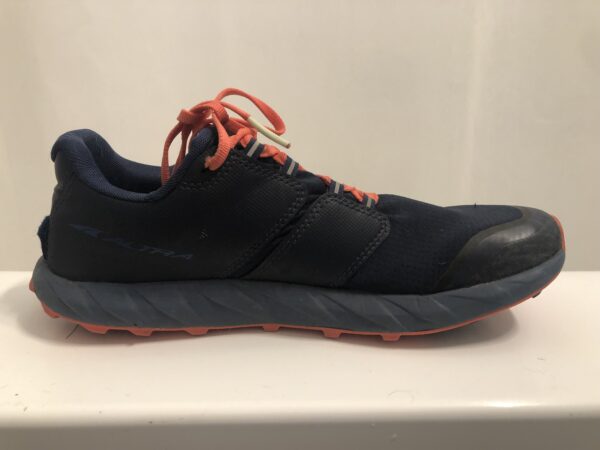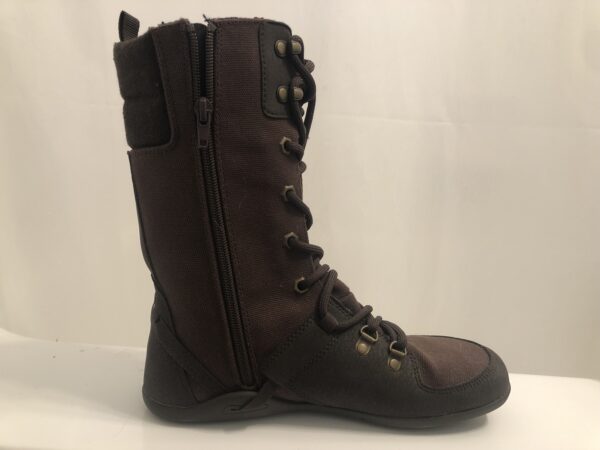14. Zero Drop Shoes Copy


Zero drop shoes are designed to provide an experience similar to barefoot walking. They have no heel lift which many shoes have which allows the opportunity to get into a more neutral ankle/foot angle. This supports the most natural gait cycle, ankle/foot movement pattern and relationship with the ground.
We have found these companies so far that provide this type of shoe design. We particularly like Altra and Xero but there are others and more that keep popping up as zero drop becomes more popular. Shoe companies are increasingly coming out with their own zero drop shoe so you can check with any number of them to see what other options exist.
You will find a difference in the height of the foot beds where some are very minimal while others such as some of the Altra shoes have thicker bases. In general, the lower to the ground the more grounded and balanced you will feel. However, the more minimalist the shoe there is commensurate sacrifice in shock absorption and cushion. Therefore, you may need to experiment with the most appropriate food bed that feels best for you.
Some individuals may not be ready for a zero drop shoe and may need to work on improving their postural stability before they can tolerate it. When you find the right shoe, you should really sense it in your body with it feeling very comfortable.
Browse the following 6 options or use your testing technique to determine the specific brand or type of shoes that is best for you right now.
Shoe Assessment Instructions:
- Select one or more shoes that are zero drop.
- While barefoot, walk for 30-60 seconds on a level surface to get a feel for how you move without shoes on. Sometimes filming your walk can help you see a difference if feeling it is hard.
- While still barefoot, perform at least 2 lower body Physical Resonance Tests (toe touch, squat, kneeling or single leg balance) to get a baseline.
- Put one pair of shoes on, walk for 30-60 seconds and do the same 2 Physical Resonance Tests to see if there is a difference. Film this walk as desired to compare with your barefoot walk.
- If either of your Physical Resonance Tests are worse it indicates those shoes are not a good match for you.
- If either of your Physical Resonance Tests are better it indicates those shoes positively support your postural system.
- If either of your Physical Resonance Tests are not different it indicates those shoes neither help nor hurt you.
- If one was better and one was worse, add a third Physical Resonance Test and assess the walking videos to see how you are moving.
- Perform this for all shoes you wish to test. Ideally you are always wearing shoes that provide positive results in your Physical Resonance Tests and your walk should feel comfortable and better in some way.
- When a shoe is right for you, it should feel good. However, sometimes a new pattern can feel "different" or "weird" while still testing as beneficial for the body. Trust your physical tests. In these cases, you may need to gradually build up your tolerance to it using a wear schedule.
- Some individuals may not be ready for a zero drop shoe and need to work on improving their postural stability before they can tolerate them.
- You may need to add a general orthotic or a custom PRI orthotic inside a shoe to get even more of a positive result.
- “When I put on my first pair of Xero shoes and stood up, I felt confident, tall and elongated in my spine. I was grounded but felt like I was walking lighter, and noted how supportive the ground was below me.” -Kori Reigel
- “When I put my first pair of Altra shoes on I immediately felt my body relax. My shoulder range of motion actually completely restored. I personally love the Superior 5 as it’s lower to the ground but still provides a great cushion. I just ordered 4 more pairs!” -Heather Carr

This content is being provided for informational purposes only and is not a substitute for medical advice. This content has the potential to produce healing and detox responses. Please consult your medical doctor or professional if you have medical concerns. If you experience any discomfort or adverse effects discontinue.
©️ 2022 Resonate Health. This content may not be duplicated, copied or shared unless authorized.
You do not have permission to view this form.
You do not have permission to view this form.
CONTACT US
PRIVACY POLICY
TERMS OF SERVICE
CONDITIONS AND CONSIDERATIONS INFORMATION
© Resonate Health 2024 DESIGN BY ABRACADABRA CREATIVE
